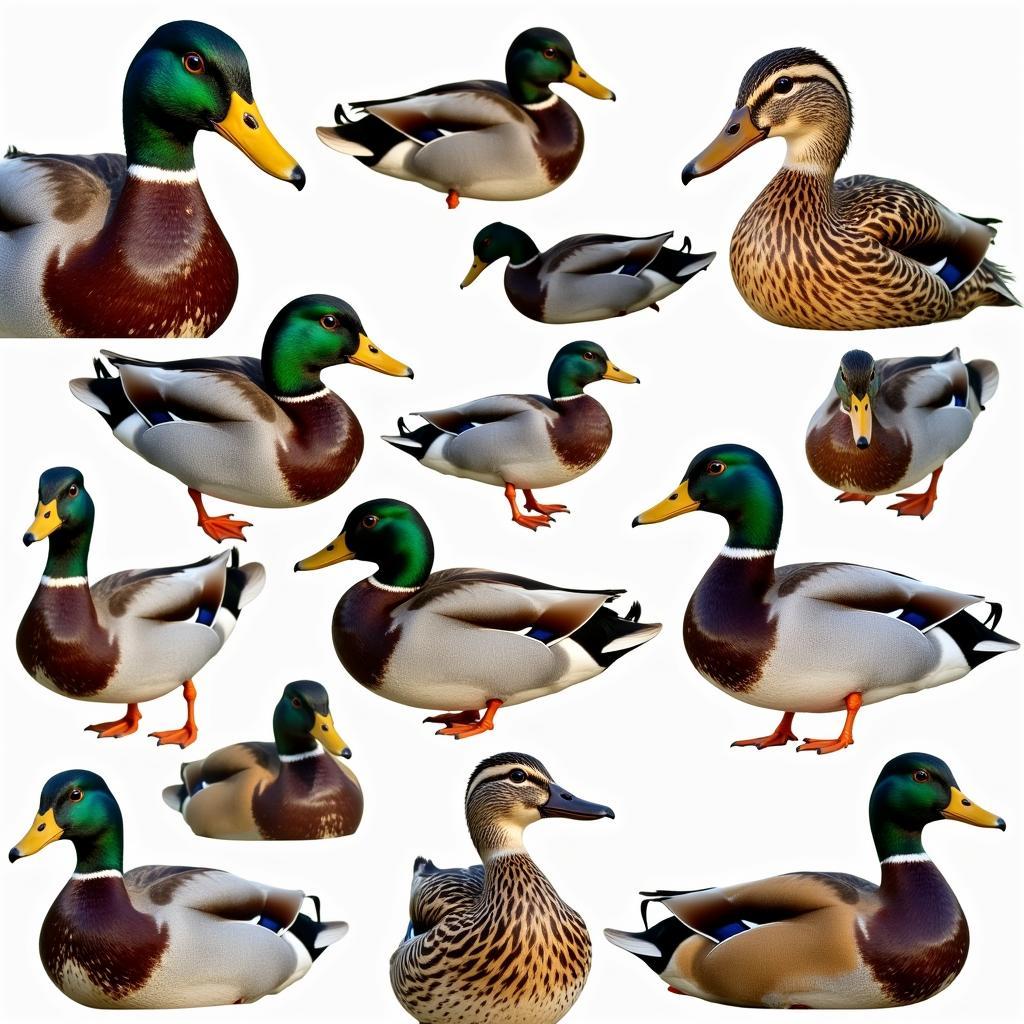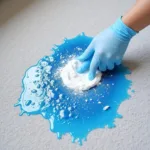When we think of ducks, images of bright yellow ducklings might come to mind. But the world of duck coloration goes far beyond this simple picture. The truth is, ducks display a stunning variety of colors, patterns, and hues, making “What is the color of a duck?” a more complex question than it initially seems.
 Duck Color Variation
Duck Color Variation
Duck Coloration: It’s More Than Meets the Eye!
While the classic yellow duckling is adorable, adult ducks boast a spectrum of colors influenced by various factors like species, sex, and even the time of year. Let’s delve into some fascinating details:
Sexual Dimorphism: A Tale of Two Colors
One of the primary factors influencing duck color is sexual dimorphism. Simply put, male and female ducks of the same species can look drastically different. Take the Mallard, for example. The male flaunts an iridescent green head, a white neck ring, and a chestnut brown chest, while the female dons a more camouflaged pattern of brown and tan feathers. This distinction serves a crucial purpose. The female’s muted colors help her blend into the nesting environment, protecting her and her eggs from predators. Meanwhile, the male’s vibrant colors help attract mates.
Beyond the Mallard: Exploring Other Species
The Mallard is just one example. Consider the Wood Duck, a striking species where the male boasts a multicolored head with iridescent greens, blues, and purples. In contrast, the female exhibits more subtle beauty with a grayish-brown body and a distinctive white teardrop-shaped eye-ring.
“Ducks have evolved a remarkable range of colors and patterns, each serving a specific purpose in their survival and reproduction,” notes Dr. Emily Carter, an ornithologist specializing in waterfowl. “From camouflage to mate attraction, their colors are a testament to the power of natural selection.”
Seasonal Changes: A Duck’s Wardrobe Change
Just like humans swapping out summer clothes for winter wear, some duck species undergo a seasonal change in plumage. This is particularly true for males who sport their most vibrant colors during the breeding season to attract mates. After breeding, they molt into a more subdued “eclipse” plumage, resembling the females. This transformation provides them with better camouflage during the vulnerable period when they lose their flight feathers.
More Than Just Pretty Feathers: The Purpose of Duck Coloration
Duck coloration is not merely about aesthetics; it plays a crucial role in their survival and social interactions. Here’s how:
- Camouflage: As mentioned earlier, muted colors, like the mottled browns of female ducks, provide excellent camouflage, particularly against the backdrop of reeds, grasses, and water where they build their nests.
- Mate Attraction: The vibrant colors and intricate patterns displayed by male ducks during the breeding season are a powerful tool for attracting females. The brighter and more distinct the plumage, the more attractive the male is to potential mates.
- Species Recognition: Different duck species have evolved unique color patterns that help them identify each other. This is crucial during breeding season to ensure that ducks find mates of their own kind.
- Communication: While not as vocal as some bird species, ducks use visual cues, including body postures and feather displays, to communicate with each other. For instance, a sudden flash of white feathers on the wings can signal alarm or warn off rivals.
FAQs About Duck Colors
1. Are all baby ducks yellow?
Many ducklings, particularly Mallards, are indeed yellow when they hatch. This provides camouflage amongst reeds and grasses. However, some species, like Wood Ducks, have darker-colored ducklings that better blend in with forested environments.
2. Why do some ducks have bright orange feet?
Brightly colored feet, like the orange feet of a Mallard, can signal good health and a strong immune system, making them more attractive to potential mates.
3. Can ducks change their color?
While ducks don’t change color instantly like chameleons, they do undergo molting, where they shed old feathers and grow new ones. This molting process can lead to noticeable changes in their appearance, particularly in males who transition between breeding and eclipse plumages.
Exploring the World of Duck Colors
From the vibrant greens and blues of the Mallard to the subtle browns and tans of the female Wood Duck, the world of duck coloration is full of wonder and diversity. If you’re interested in learning more about specific duck species and their unique colors, you can find more information on what colors do ducks see and what color are ducks feet. So next time you’re by a pond or lake, take a moment to appreciate the beauty and complexity of these feathered creatures, their colors telling a story of survival, adaptation, and the wonders of the natural world.
For assistance with your color inquiries, contact us at 0373298888, email us at [email protected], or visit us at 86 Cau Giay, Hanoi. Our dedicated customer service team is available 24/7 to help you!

